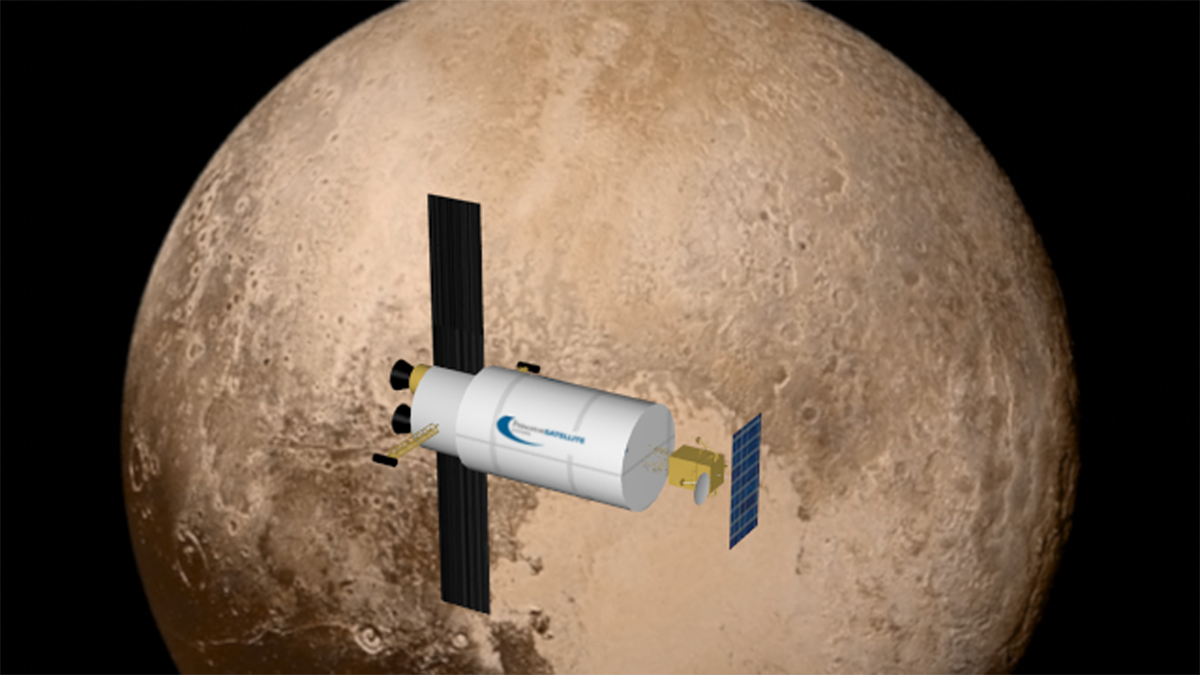NASA awards $500,000 to Princeton firm, lab working on fusion-fueled spacecraft
Listen
(Princeton Satellite Systems/NASA)
A small aerospace company in New Jersey and the Princeton Plasma Physics Laboratory have received a half million dollars from NASA to develop their idea of a spaceship that could land on Pluto.
The technology behind their spaceship’s power source could also be used to generate power here on Earth.
Aerospace engineer Stephanie Thomas, who is vice president of Princeton Satellite Systems, has been working with Samuel Cohen of PPPL on the idea. Cohen is the main designer of the fusion reactor at the heart of their project.
To picture the spaceship engine they envision, imagine a cylinder about the size of a minivan.
A fusion reactor in the middle sticks atoms together to produce power; but it also doubles as a rocket engine. Gas goes around the hot reactor, shoots out the other end, and that propels the spaceship forward.
Unlike other fusion reactors that cost billions of dollars and facilities the size of football fields, this reactor produces less power, but is much smaller and cheaper.
The key difference is that other fusion reactors use a lot of power to make atoms really hot; once it gets going, it stays hot and sustains itself.
The fusion reactor for this project works differently — an electric current runs through a loop of wire around the reactor, and it keeps plasma inside the reactor turning, just like a motor. That produces power, with only about 10 percent of the output to keep it going.
Thomas’ team wrote this proposal after NASA’s New Horizons probe sent back pictures of Pluto in 2015.
New Horizons “flew by Pluto, it said, ‘Hi Pluto, bye Pluto,’ at 14 kilometers per second, and it had the power of about two light bulbs on board and each picture takes two days,” she said.
With the fusion reactor, Thomas said, their Pluto Explorer would get there faster — and send back better data.
“It’s like HDTV data rates back — or better — because we have so much power available.”
Thomas said her team will keep working with the Princeton Plasma Physics Laboratory to develop their reactor and spaceship.
She said the fusion reactor could be used for more than landing a spaceship on Pluto — it could generate clean energy on other spacecraft, submarines, aircraft carriers, or small power grids.
With extra funding, Thomas said, the reactor could be ready in 10 years.
WHYY is your source for fact-based, in-depth journalism and information. As a nonprofit organization, we rely on financial support from readers like you. Please give today.

